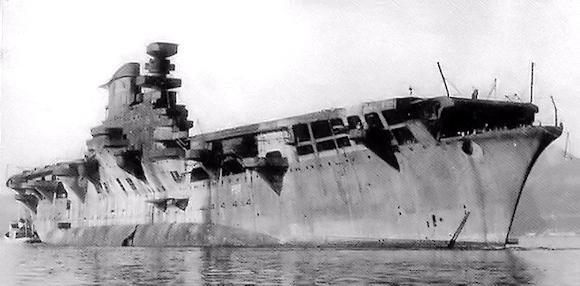Although the Italian military leaders had always opposed the construction of aircraft carriers, following the attack on Taranto on the night of 11-12 November 1940 and the unfortunate air-naval day of 28 May 1941 (clashes of Gaudio and Matapan) which made particularly the effectiveness of the embarked aviation was evident, it was urgently decided to equip the Royal Navy with an aircraft carrier unit.
The head of the government Mussolini personally (but belatedly) ordered the chief of staff of the navy Cavagnari to provide for the rapid construction of an aircraft carrier which would have ensured air defense with its fighter aircraft.
The Royal Navy, in the plans of its most qualified exponents, had desired that aircraft carrier long before the war began, but it was always opposed. The war experience will demonstrate its indispensability in a modern war on the seas.
The chosen ship was the transatlantic Roma (following photo), as despite being a relatively recent ship it needed repair work and the installation of a new engine system and would therefore have been sold quite easily by the shipping company. The Roma it was built for the “Società Navigazione Generale Italiana” of Genoa, in the “G. Ansaldo & Co ”of Sestri Ponente, where she was launched on 26 February 1926.
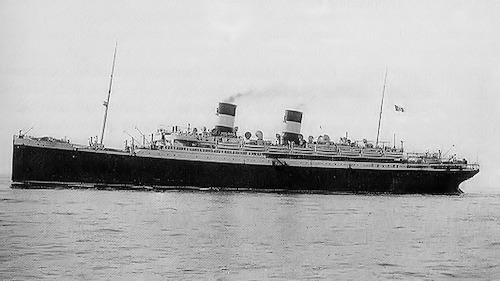 It was not possible to think of a new design and construction that would have taken years, it was necessary to resort to the alternative of adapting an already existing steamship into an aircraft carrier, with a radical transformation.
It was not possible to think of a new design and construction that would have taken years, it was necessary to resort to the alternative of adapting an already existing steamship into an aircraft carrier, with a radical transformation.
A first project for the transformation of Roma had been ready since mid-1940 and the ship had also been requisitioned to undergo modifications, but inexplicably the order was revoked on 27 January 1941. The 1941 project envisaged leaving the ship's hull almost unchanged, in order to allow for rapid completion of the works. In general terms it was inspired by the one already prepared in 1932 for the construction of an aircraft carrier from scratch. After the disembarkation of many furnishings, the Roma it was delivered to the Royal Navy with a displacement of 21.000 tons.
Changes
1) During the transformation, the project should have increased the speed from 21 knots to 30.
2) Creation of rigorously watertight compartments with a robust structure inside the ship, capable of withstanding the explosion of underwater bombs.
3) Addition of a suitable number of anti-aircraft weapons.
4) Flight deck of sufficient length for the landing of fighter aircraft and catapults for their rapid take-off.
5) Space on the lower decks for the necessary hangars, petrol stores, ammunition, etc.
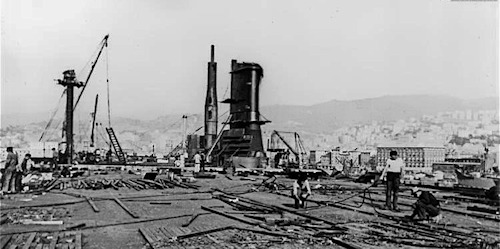
A few years before the study of the new unit began, the number of “Capitani Romani” class cruisers, planned in 12 units, had been reduced. Therefore four individual engine systems intended for two of those units were used for theAquila.
The armament
THEAquila Like all aircraft carriers in the world, it had exclusively anti-aircraft and anti-torpedo armament.
The ready-made artillery of the "Capitani Romani" cruisers no longer built were used. In total the unit was equipped with:
- 8 135/45 naval guns distributed in the 4 quadrants.
- 12 65/54 naval and anti-aircraft guns distributed in the four quadrants
- 132 20 mm machine gun barrels distributed in the central area, and divided into 22 individual complexes.
Planes
The flight deck of the ship was mt. long. 211,60, with a maximum width of m. 25,20. The unit was supplied with two German-made “DEMAG” compressed air catapults for launching aircraft.
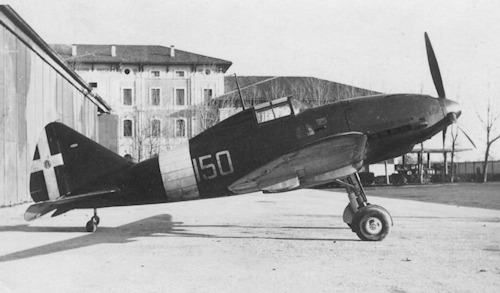 The aircraft that was expected to board was the "King. 2001"fixed wing, a good single-seat fighter aircraft, capable of developing an hourly speed of around 500 km, already in charge of the Regia Aeronautica, armed with two 12.7 mm machine guns and two 7.7 mm, but the version was also present night fighter with a 20 mm cannon, as well as the possibility of carrying a 640 kg bomb in the fighter-bomber configuration.
The aircraft that was expected to board was the "King. 2001"fixed wing, a good single-seat fighter aircraft, capable of developing an hourly speed of around 500 km, already in charge of the Regia Aeronautica, armed with two 12.7 mm machine guns and two 7.7 mm, but the version was also present night fighter with a 20 mm cannon, as well as the possibility of carrying a 640 kg bomb in the fighter-bomber configuration.
L'Aquila, never entered service. Already damaged during the fitting out in November 1942, on 8 September 1943 she was practically ready for testing and sea trials. On 9 September she was sabotaged and abandoned by the crew, and she fell into German hands.
On 16 June 1944 it was bombed in the port of Genoa by American planes, and finally on the night of 19 April 1945, it was attacked by assault vehicles of the Southern Italian Navy, to prevent the Germans from sinking it at the mouth of the port.
Towed by the English to Calata Bettolo, it remained there for a few years until in 1949 it was towed to La Spezia, awaiting a decision on its possible reuse for civilian uses, but having encountered the difficulty and high cost it was decided to demolish it, occurred in 1952.
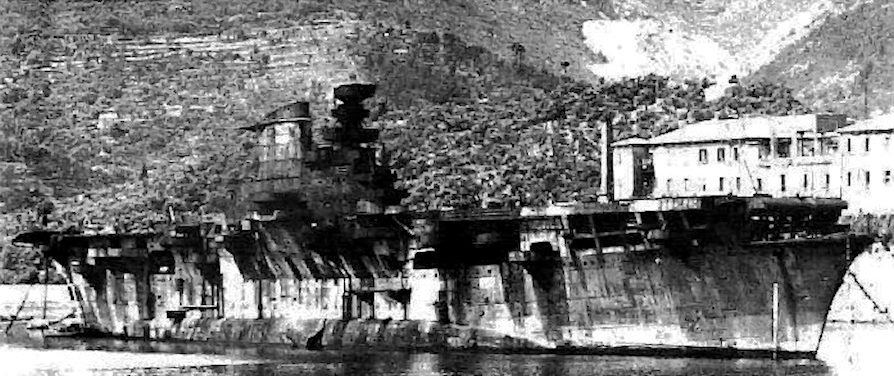
REFERENCES
1) Historical Office of the Navy – Italian ships of the line 1861-1961 – Rome 1962
2) Historical Office of the Navy - Historical Almanac of Italian Military Ships 1861-1995 – Rome 1996
Photo: Regia Marina / web

